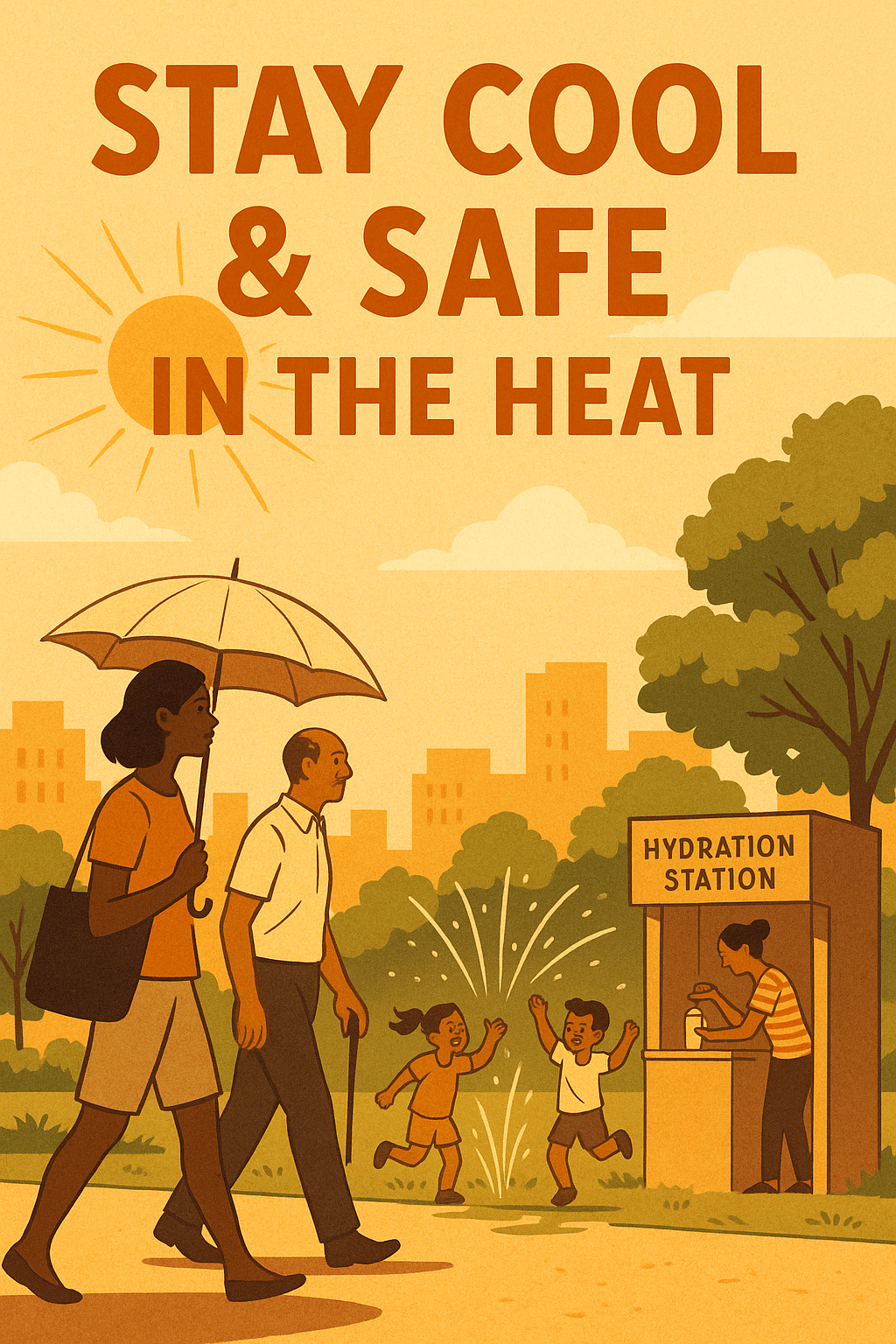🌞 Stay Cool & Safe in the Heat
As climate change intensifies, extreme heatwaves are becoming more common and dangerous. Whether you’re walking to work, playing outside, or simply running errands, it’s vital to know how to keep yourself and your loved ones safe from the sweltering summer heat. In this blog, we’ll share expert-approved strategies, hydration hacks, and essential do’s and don’ts for staying cool in high temperatures.
🔥 Why Heat Safety Matters More Than Ever
Climate change isn’t just about rising sea levels — it’s about rising temperatures too. According to the World Meteorological Organization, heatwaves are becoming longer, hotter, and deadlier. In many regions, summer temperatures regularly exceed 40°C (104°F), putting vulnerable populations—especially children, seniors, and those with medical conditions—at serious risk.
🧊 Top Tips to Stay Cool in the Heat
1. Hydrate Smartly
Drink water frequently—even before you feel thirsty. Avoid sugary drinks, alcohol, and caffeine as they contribute to dehydration. Add slices of citrus or mint to your water for an energizing twist!
Pro tip: Keep a refillable bottle with you at all times.
2. Dress for the Weather
Opt for light-colored, loose-fitting clothing made from breathable fabrics like cotton or linen. Avoid dark colors which absorb heat. A wide-brimmed hat and UV-blocking sunglasses are great additions.
3. Stay Indoors During Peak Heat Hours
Try to stay inside from 11 AM to 4 PM when the sun is at its strongest. If you need to go out, plan early morning or evening outings. Use fans, curtains, and air conditioners to keep indoor spaces cool.
4. Take Cool Showers or Baths
Lower your body temperature quickly by taking a cool (not freezing) shower or soaking your feet in cold water. This technique is especially helpful after outdoor activities or workouts.
5. Avoid Strenuous Activity
Don’t push your body when it’s hot out. Postpone heavy workouts or laborious chores until temperatures drop. If it’s unavoidable, work in shaded or ventilated spaces and take frequent breaks.
6. Know the Signs of Heat Illness
Learn to recognize heat exhaustion and heat stroke.
Heat Exhaustion Symptoms:
- Heavy sweating
- Dizziness or fainting
- Nausea or vomiting
- Cold, clammy skin
Heat Stroke Symptoms (a medical emergency):
- High body temp (above 103°F/39.4°C)
- Hot, red, dry skin
- Rapid pulse
- Confusion or unconsciousness
Seek immediate medical help if you suspect heat stroke.
👨👩👧 Protecting Vulnerable Groups
👶 Babies & Children
Never leave kids in a parked car, even for a minute. Keep them hydrated and dressed in cool clothing. Provide shaded play areas outdoors.
👵 Seniors
Older adults are more sensitive to heat and may not feel dehydration symptoms as quickly. Check on elderly family or neighbors during heatwaves.
🌍 The Bigger Picture: Climate & Community
Extreme heat events are a clear signal of our changing climate. We must collectively:
- Support green infrastructure like tree planting
- Advocate for urban cooling systems
- Reduce personal carbon footprints
Small steps like using public transport or installing reflective roofing can create long-term community impact.
Beat the heat! ☀️ Stay safe, hydrated, and heatwave-ready with these life-saving tips.
StayCool #HeatwaveTips #SummerSafety #ClimateChangeAwareness #BeatTheHeat #HydrationMatters #SunProtection #SustainableSummer


Leave a Reply